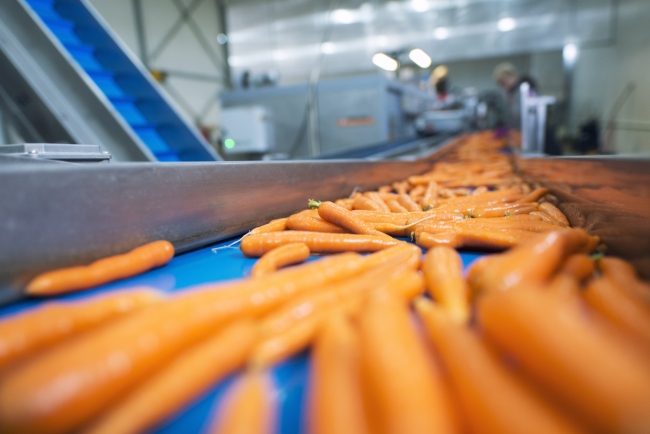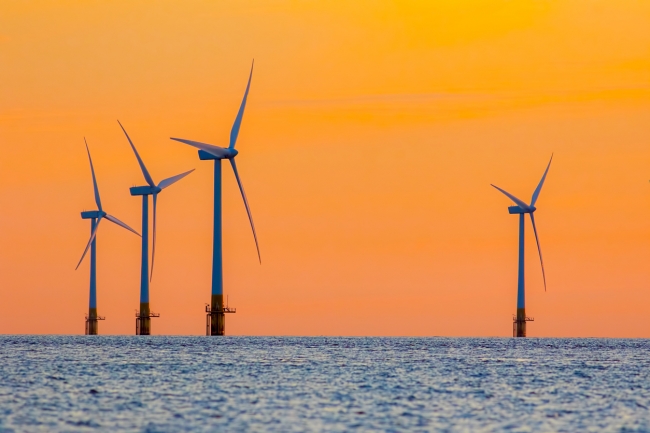5 minute read • published in partnership with Barclays
Opinion: Go local to deliver low carbon, clean growth
While the coronavirus outbreak consumes all thoughts, behind the scenes businesses and business support groups are trying to focus on their Local Industrial Strategies. Each of 38 Local Enterprise Partnerships in England has submitted its own Industrial Strategy to the Department for Business, Energy and Industrial Strategy (BEIS) – seven have been published and the rest await approval by BEIS. Lee Collinson from Barclays highlights why we should look to East Anglia for inspiration to capitalise on green, and often rapid, growth.
Clean growth is a common theme across the LEPs, guided by the UK’s national Industrial Strategy, where delivering affordable energy and clean growth is one of 10 pillars. Clean growth often focuses on clean energy especially in regions where renewable energy, mainly offshore wind, is prevalent – such as the South East, and in the Energy and Clean Growth plan for the Northern Powerhouse.
But clean growth covers the whole low carbon and sustainability agenda including food and transport, and an exemplar region here is East Anglia.

Clean growth covers the whole low carbon and sustainability agenda including food and transport / Picture: Getty/iStock
Biotech companies
Norfolk Suffolk Unlimited, the region’s business organisation responsible for the local industrial strategy (LIS), makes clean growth its headline policy, citing that East Anglia is “leading the transition to a post-carbon economy through sustainable food production and sustainable energy generation.” Norwich Research Park is a partnership between the University of East Anglia (UEA), the Norfolk and Norwich University Hospitals NHS Foundation Trust and other research institutes. The park, with 115 companies and 3,000 scientists and clinicians, is a world leader in plant and microbial sciences and in interdisciplinary environmental science. It is a cluster of high tech, high growth clean industry companies, such as Germains Seed Technology, Iceni Diagnostics and Leaf Expression Systems with award-winning research from the John Innes Centre and the Earlham Institute all on the same estate.
These businesses are seeking novel ways to feed and heal populations through biotechnology. As well as being part of the new low carbon economy, they are also high growth firms, exciting for jobs and exports.
A good example is Leaf Expression Systems (Leaf), founded locally in 2017. The company’s goal was to develop and commercialise Hypertrans®, a scientific breakthrough from the John Innes Centre with the potential to revolutionise the production of proteins, vaccines, diagnostics and complex natural products. It develops these valuable products by growing them inside plants.
Leaf grew both its pipeline by over 200% and its revenue (>300%) in 2019. The business has secured numerous commercial projects from customers in the UK, USA and Australia, and has prospective customers in all these territories. Leaf’s technology can be used to manufacture new drug candidates that cannot be produced as effectively using conventional technologies and its Hypertrans® technology can produce biosimilar drugs that perform identically to the original drugs in all the in-vitro tests.
A topical area for its in-house R&D is in the area of therapeutic antibody expression, enzyme replacement therapies, and the development of plant-produced Virus-Like Particles (VLPs) for vaccines against emerging infectious diseases. Co-founder of Leaf, George Lomonosoff, is working on creating a vaccine against coronavirus in pigs. If it works, it could be used on humans. There are 114 other organisations based on or near the Park working in the field of plant biotechnology and agri-tech.
Recycling technology
Outside biotechnology, RPC M&H Plastics in Beccles is a plastics packaging company specialising in recycled plastic products. Some of its bottles are made form biopolymers. It specialises in PCR – post consumer regrind – plastic products that have been recycled, i.e. reprocessed to be re-used in a new manufacturing cycle. Straddling manufacturing and logistics, Equipmake is an electric drivetrain business. It opened a new 1,500 square metre factory in Snetterton near Norwich in December. One key product is a lightweight, power-dense electric motor, manufactured in-house. Its fully electric bus chasses are winning bus company customers in Argentina, Brazil and India.
There is a close link between productivity and sustainability. In June 2019 the UEA invested £7.4m in a new Institute of Productivity. Perhaps this can be seen like a small Catapult centre for the region, as its work is designed to educate the next generation of digitally aware engineers and business leaders within modern engineering facilities, to raise productivity. Such work will benefit the agri-tech and renewable energy firms on its doorstep.
Wind power
But the biggest sub-sector for clean growth in East Anglia is energy, and offshore wind in particular. The Local Industrial Strategy says Norfolk and Suffolk is at the epicentre of the world’s largest market for offshore wind energy, worth almost £1 billion a year.
The Norfolk and Suffolk coasts can access the biggest concentration of windfarms in the UK (as well as more than 150 gas platforms in the region). From Norwich, Great Yarmouth and Lowestoft, sea- and airborne wind farm contractors and suppliers can service 28 UK offshore wind farms, from Hornsea Project Two above the Humber to the Thanet farm off the Kent coast. EEEGR, the East of England Energy Group, has 260 members across the region, ranging from energy producers to supply chain companies.

The biggest sub-sector for clean growth in East Anglia is energy, and offshore wind in particular / Picture: Getty/iStock
Energy firm Vattenfall, itself with a strong sustainability ethic, is awaiting planning permission to build new offshore wind farms in the North Sea – Norfolk Vanguard and Norfolk Boreas It has worked closely with local partners, including EEGR and the East Coast College, to build a local supplier base, possibly thinking about the carbon-miles in transporting components.
Companies in this supply chain vary hugely, creating a micro-economy of engineering and manufacturing services, from big outfits like Sembmarine SLP in Lowestoft that fabricated the command platform for the Dudgeon Offshore Wind Farm, to SMEs like Gee-Force Hydraulics and ProServe, a manufacturer of control systems for the offshore industry. There are service shipbuilders and refit yards and all manner of fabrication and engineering, originally sited here to serve the oil & gas sector, and now also serving this relatively new, but booming, industry: wind. Norfolk and Suffolk Unlimited says there are 600 businesses involved in clean energy in the region.
The LIS claims the region’s offshore windfarms, those in operation and development, will meet half the Offshore Wind Sector Deal’s 30GW target by 2030.
Chris Starkie, CEO at New Anglia Local Enterprise Partnership, says: “Norfolk & Suffolk is the UK’s clean growth region and we are at the forefront of tackling challenges and opportunities for food production, energy and the climate crisis. Our skilled people, businesses and investment play a significant role for everyone globally.”
He adds “For example, by 2040 there will be £59.4bn capital investment in clean energy alone, and planned investment in offshore wind and nuclear power will produce power for 58% of the UK’s homes. Our strengths in energy generation and usage, and high-tech, sustainable agri-food, present huge opportunities, particularly across sectors. We will have a major contribution to the UK’s transition to a post-carbon economy and seek to do this with great businesses that are here now and that move here when we come out of this unprecedented period.”
Coss-sector opportunities are also particularly exciting, delivering solutions such as energy self-sufficiency in farming, or using older gas platforms for sustainable energy generation, for example. The University of East Anglia, and the University of Lincoln in next door Lincolnshire, are developing agri-technology such as for detecting the most infertile areas of fields for additional fertilizer and robots to save time and money in planting and harvesting. All of these businesses should have strong growth potential as Britain decarbonises its economy.
East Anglia is gifted with both arable land and the sea but other regions that have both should look east for inspiration to capitalise on both for green, and often rapid, growth.
